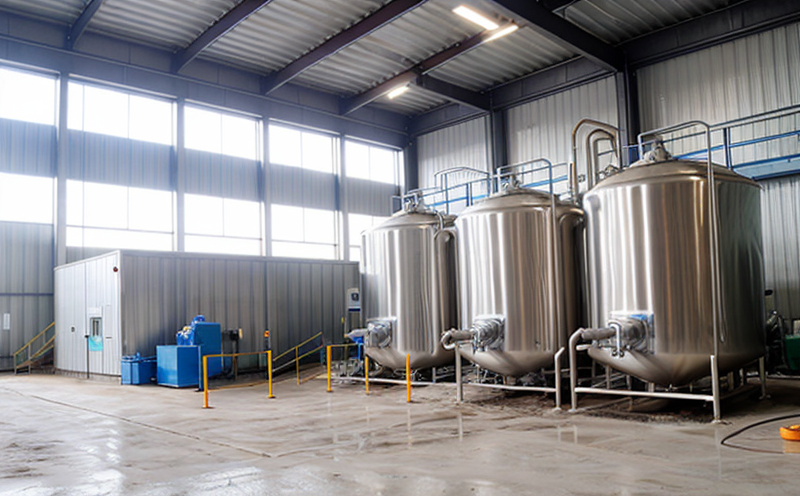ISO 11885 Trace Metal Elements Test in Process Water
The ISO 11885 standard is widely recognized as a pivotal tool for ensuring water quality in industrial processes, particularly in sectors such as pharmaceuticals, electronics, and food processing. This test focuses on the detection of trace metal elements that can significantly impact process efficiency or product quality if not controlled within specified limits.
Industrial process waters often undergo rigorous treatment to ensure they meet stringent purity standards. Trace metals like copper, zinc, iron, chromium, nickel, and lead are particularly critical because even minute concentrations can catalyze reactions, affect chemical stability, or introduce contamination that compromises the end product's integrity.
The ISO 11885 test provides a robust framework for quantifying these trace elements in process waters. This includes understanding the potential sources of contamination and implementing strategies to mitigate them effectively. By adhering to this standard, industries can ensure compliance with international norms and safeguard their reputation by delivering consistently high-quality products.
The testing method involves several stages: sample collection, preparation, digestion, and analysis using atomic absorption spectroscopy (AAS) or inductively coupled plasma mass spectrometry (ICP-MS). These techniques offer precise measurements down to parts per billion levels, ensuring accurate results. The chosen analytical technique can influence the precision of the final result, with ICP-MS being favored for its sensitivity and accuracy.
The acceptance criteria are stringent, designed to ensure that process waters meet quality specifications set by relevant standards like ISO 11885. Compliance is crucial as it prevents the introduction of unwanted metal ions into sensitive processes or products, which could lead to equipment corrosion, product spoilage, or even health hazards.
Understanding the role of trace metals in industrial processes is essential for effective quality management and compliance. By employing ISO 11885-compliant testing protocols, industries can maintain high standards throughout their operations, thereby enhancing overall productivity and reliability.
Benefits
- Enhanced Process Efficiency: Precise trace metal analysis ensures that industrial processes operate at optimal levels without unnecessary downtime or adjustments due to unexpected chemical reactions.
- Promotes Product Integrity: By maintaining strict control over trace metal concentrations, industries can ensure their products meet the highest quality standards and comply with regulatory requirements.
- Reduces Environmental Impact: Effective trace metal management helps minimize waste and pollution, contributing positively to environmental sustainability efforts.
- Ensures Compliance: Adherence to ISO 11885 ensures that industrial processes comply with international standards, thereby reducing the risk of regulatory penalties and maintaining a good reputation in the market.
The benefits extend beyond immediate operational improvements. By consistently applying this testing protocol, industries can build long-term trust with customers, suppliers, and stakeholders, fostering a culture of excellence and reliability.
Why Choose This Test
Selecting the ISO 11885 trace metal elements test for process water is essential for several reasons. Firstly, it provides a standardized approach to measuring trace metals, ensuring consistency across different facilities and laboratories. Secondly, this method offers high precision and accuracy, which are critical for maintaining product quality and process reliability.
The test also supports compliance with international standards, which can be advantageous in global markets where regulatory requirements vary widely. By using ISO 11885-compliant testing, industries can ensure that their operations meet the expectations of regulatory bodies worldwide.
Moreover, this testing protocol helps identify potential sources of contamination early on, enabling proactive measures to mitigate risks. This not only enhances operational efficiency but also contributes to a safer and more sustainable industrial environment.
In summary, choosing ISO 11885 for trace metal elements in process water ensures that industries are equipped with the necessary tools to maintain high standards of quality and compliance, ultimately leading to better product outcomes and increased customer satisfaction.
Competitive Advantage and Market Impact
- Increased Competitive Edge: By ensuring consistent water quality through rigorous trace metal testing, industries can differentiate themselves in the market by delivering superior products and services.
- Better Customer Satisfaction: Compliance with international standards and stringent testing protocols translates into higher customer trust and loyalty.
- Promotes Sustainable Practices: Effective trace metal management contributes to a more sustainable industrial sector, which is increasingly valued by consumers.
The implementation of ISO 11885 trace metal elements test in process water not only enhances internal operations but also has broader implications for the industry. By leading the way in quality and compliance, these industries set benchmarks that others aspire to follow, thereby driving positive change across the sector.
Furthermore, the use of this testing protocol can lead to innovations in water treatment technologies and processes, fostering a culture of continuous improvement within industrial operations.





